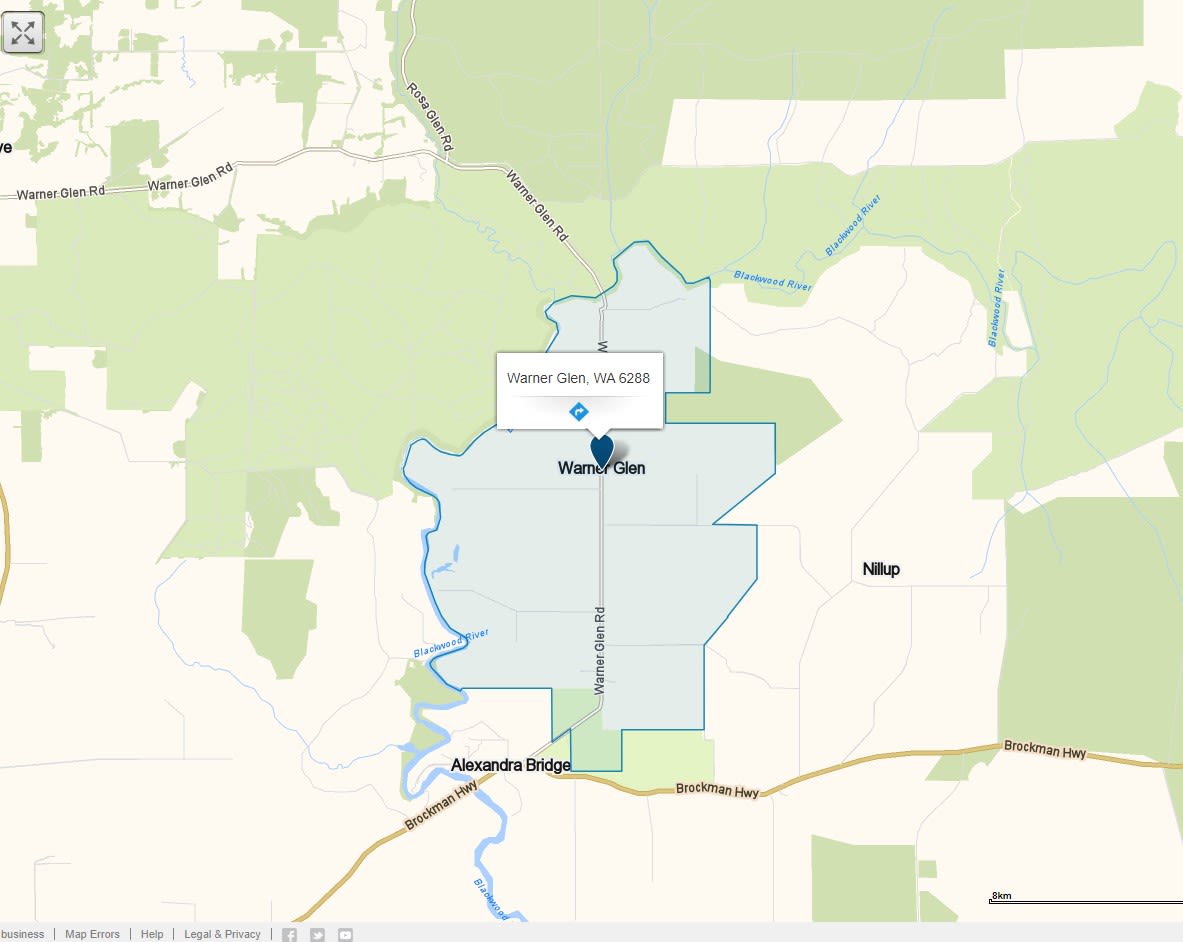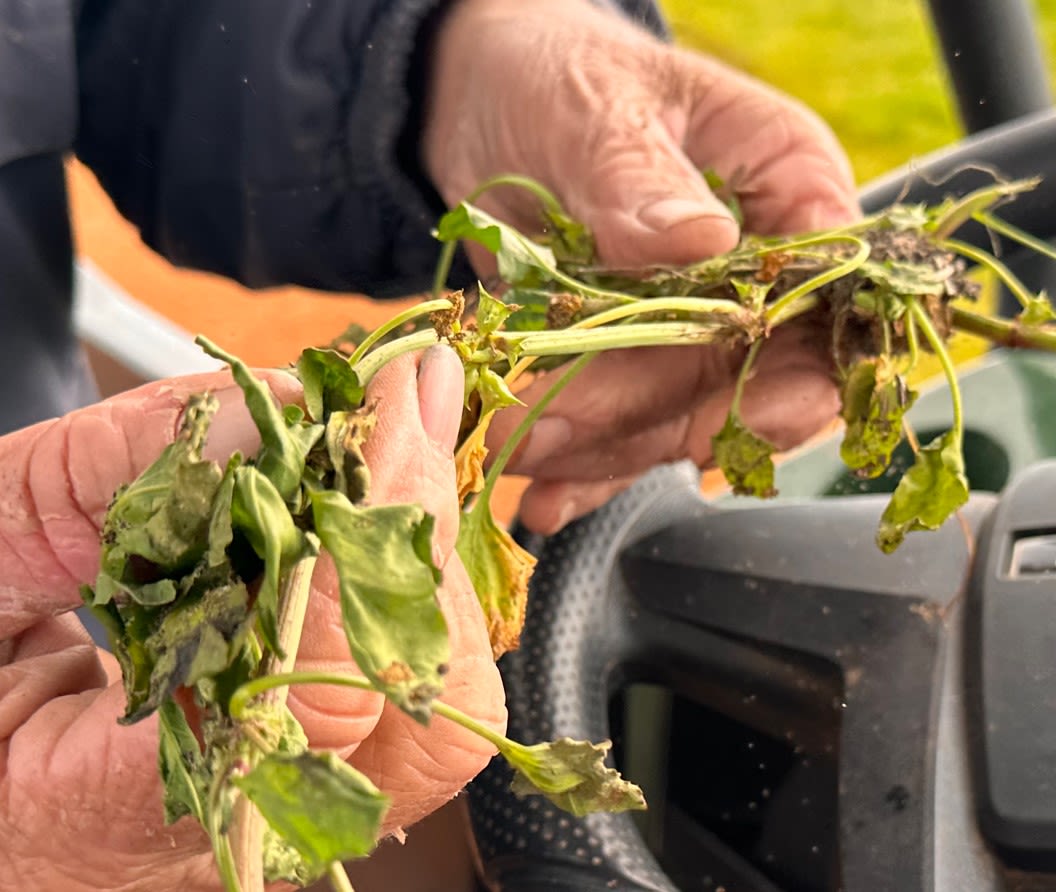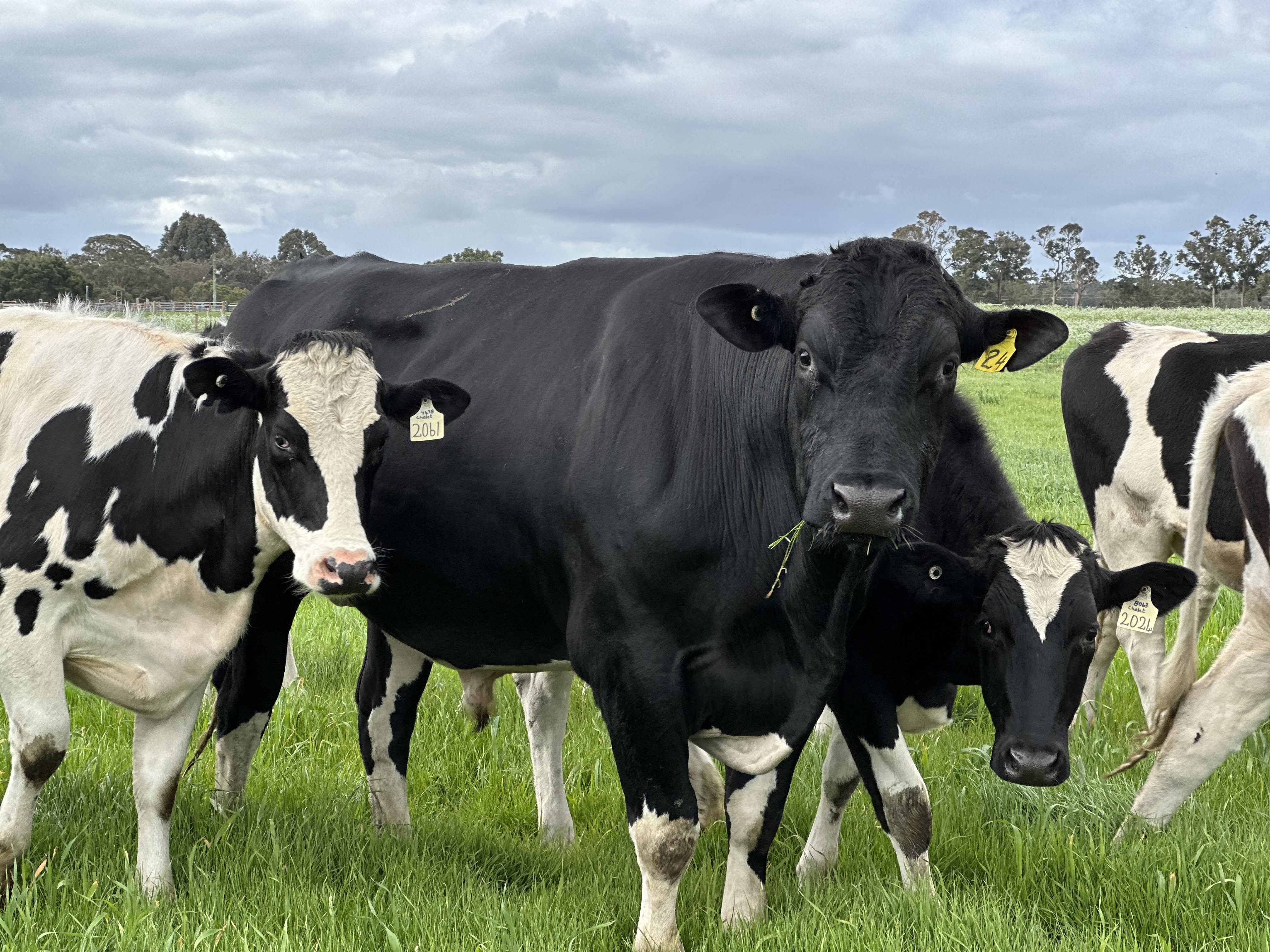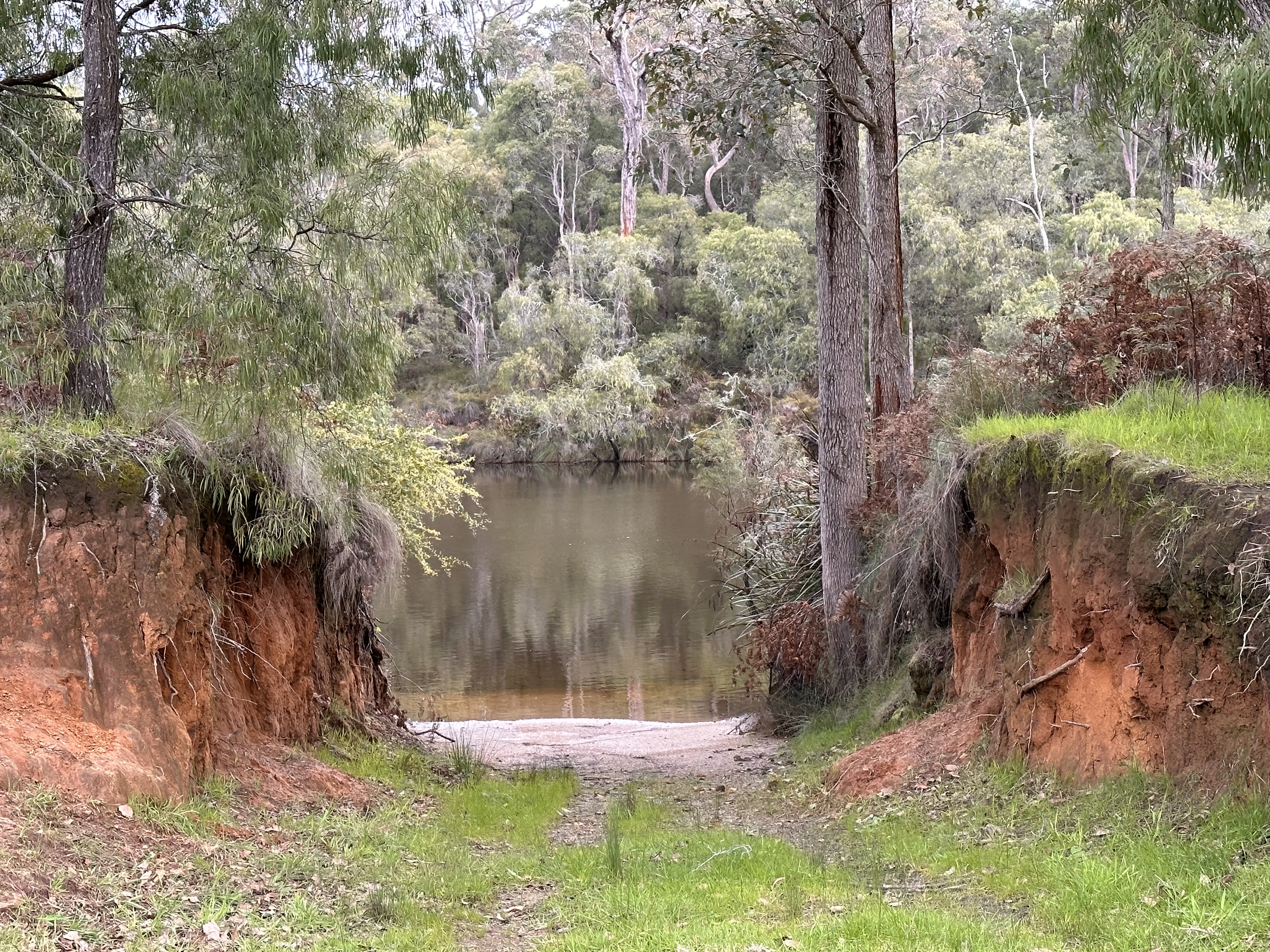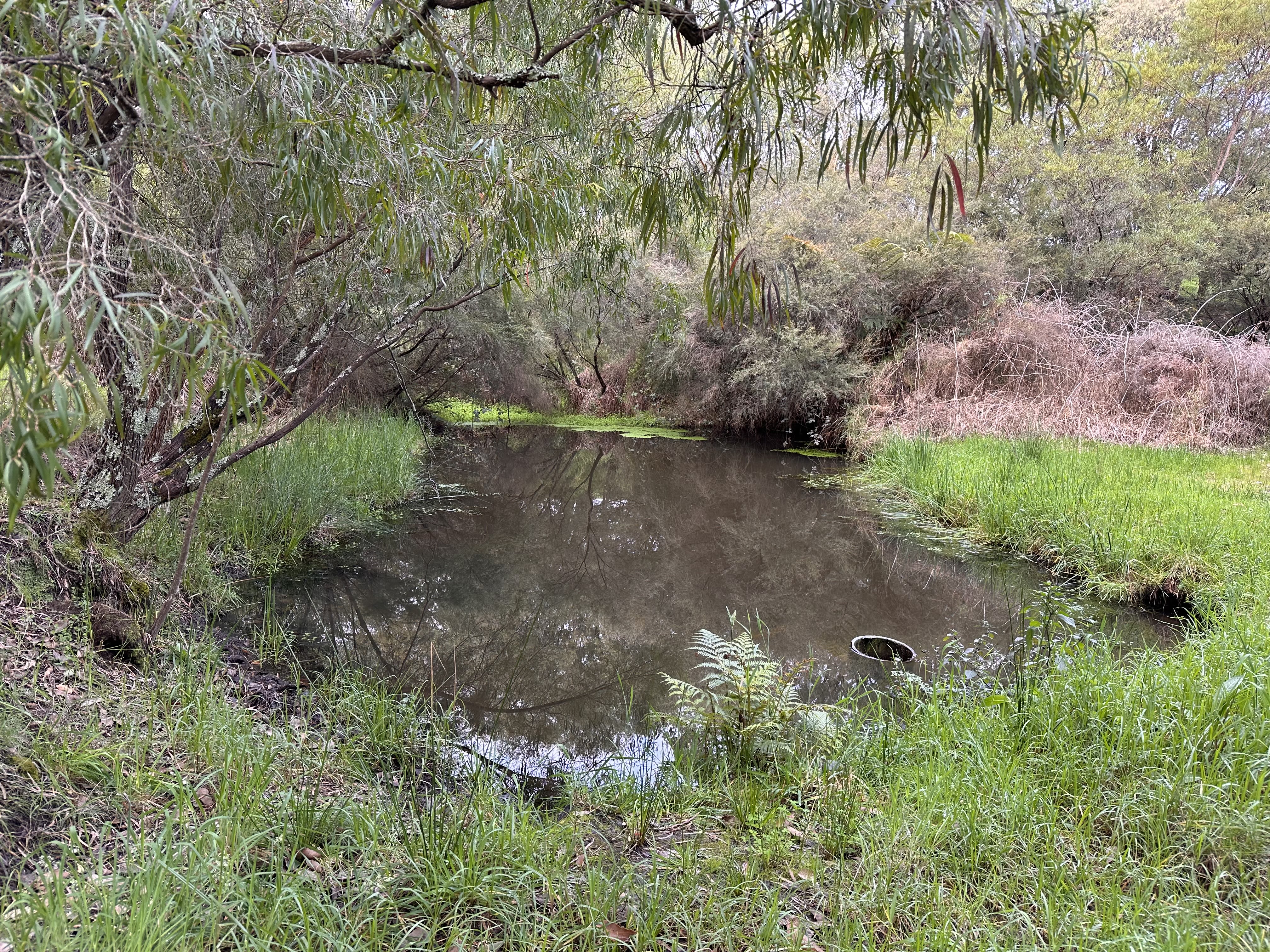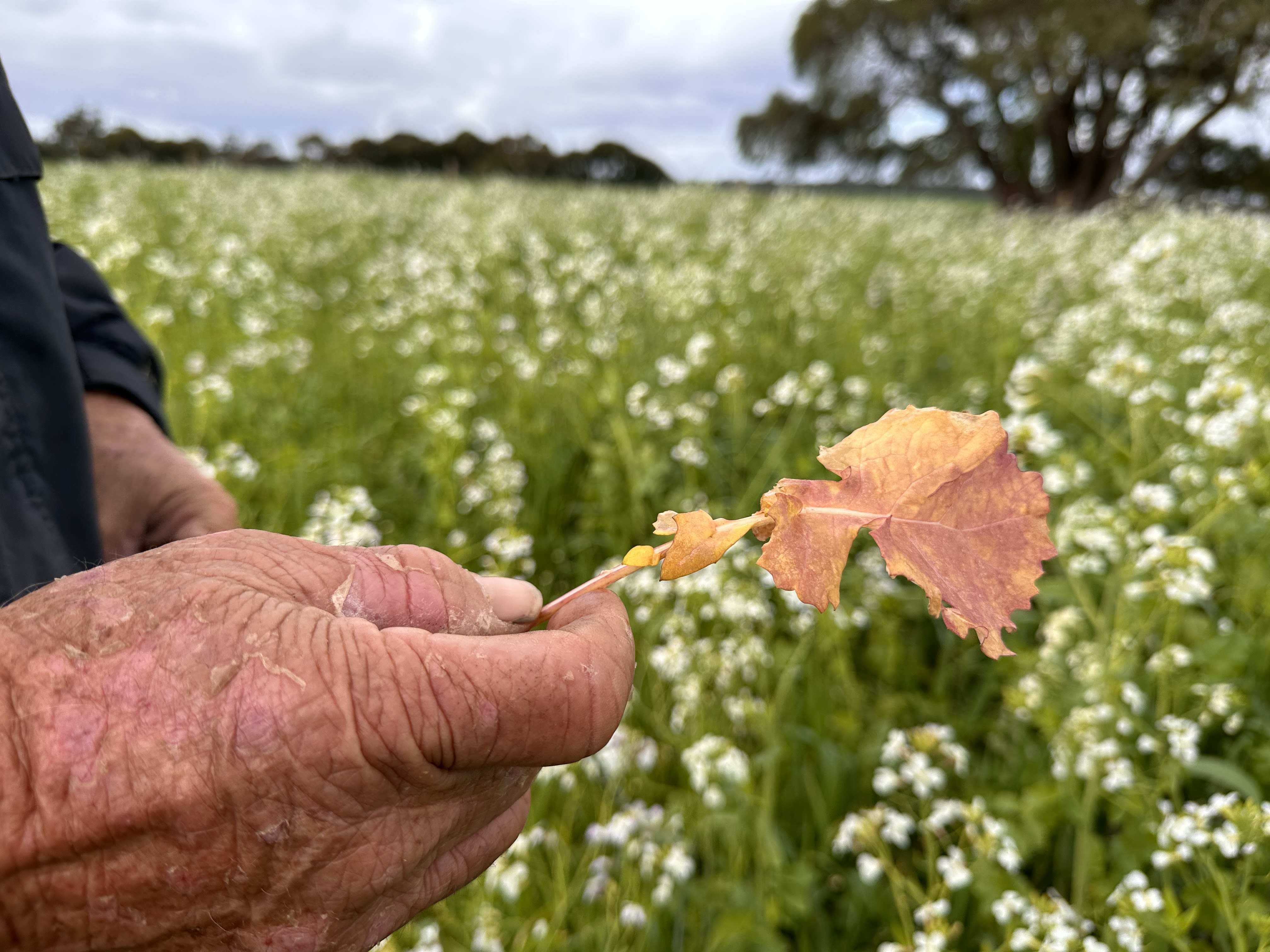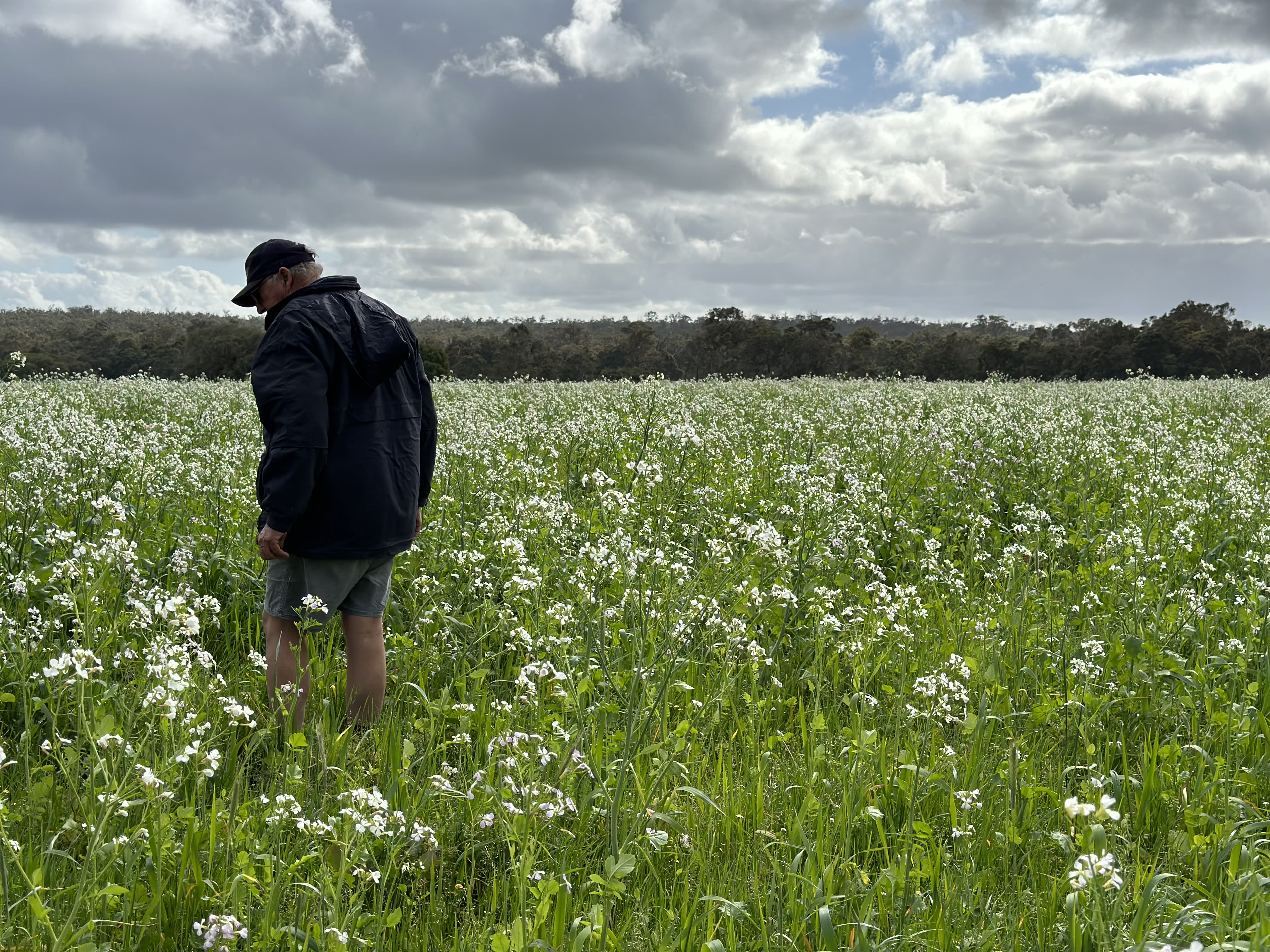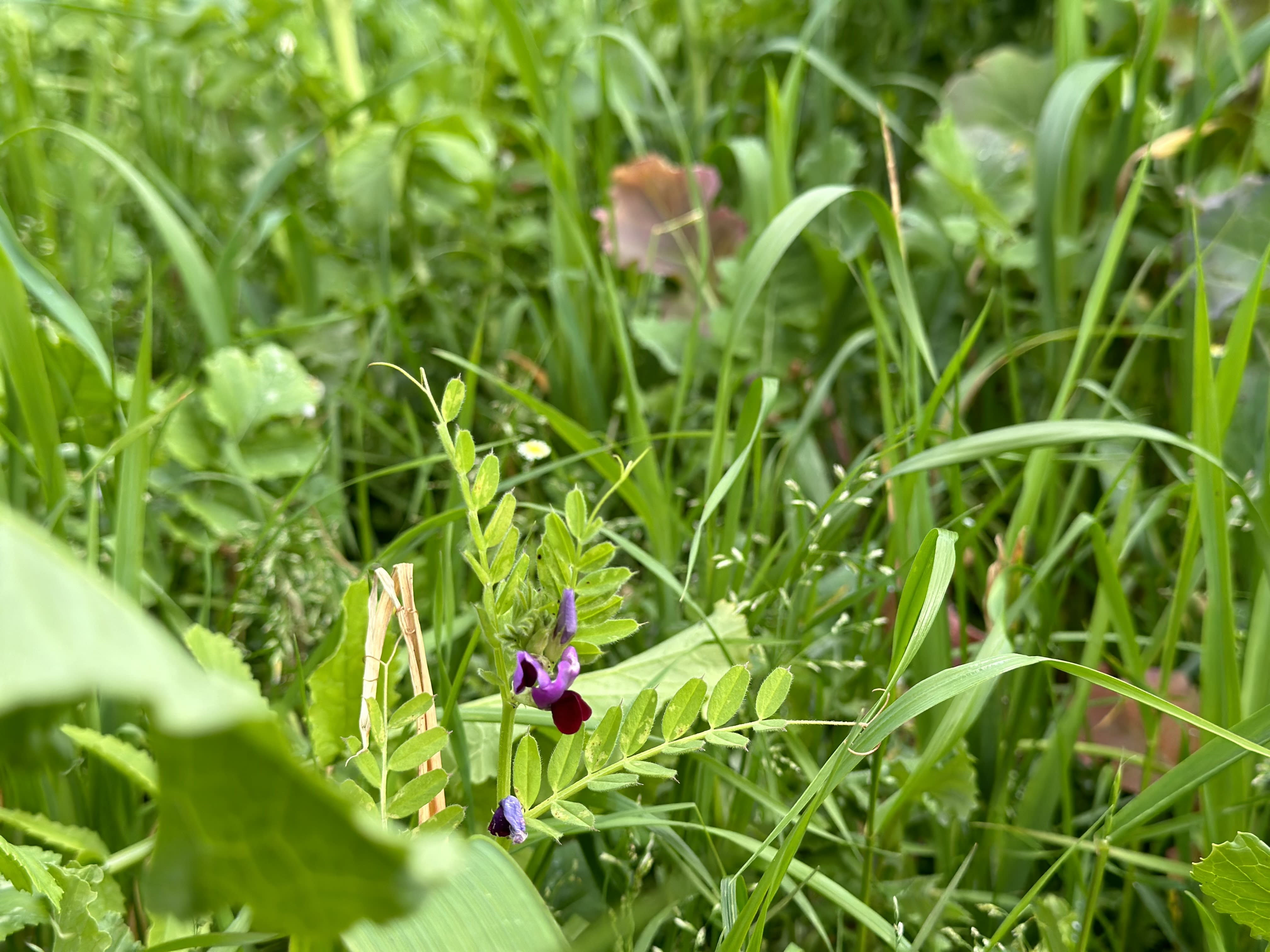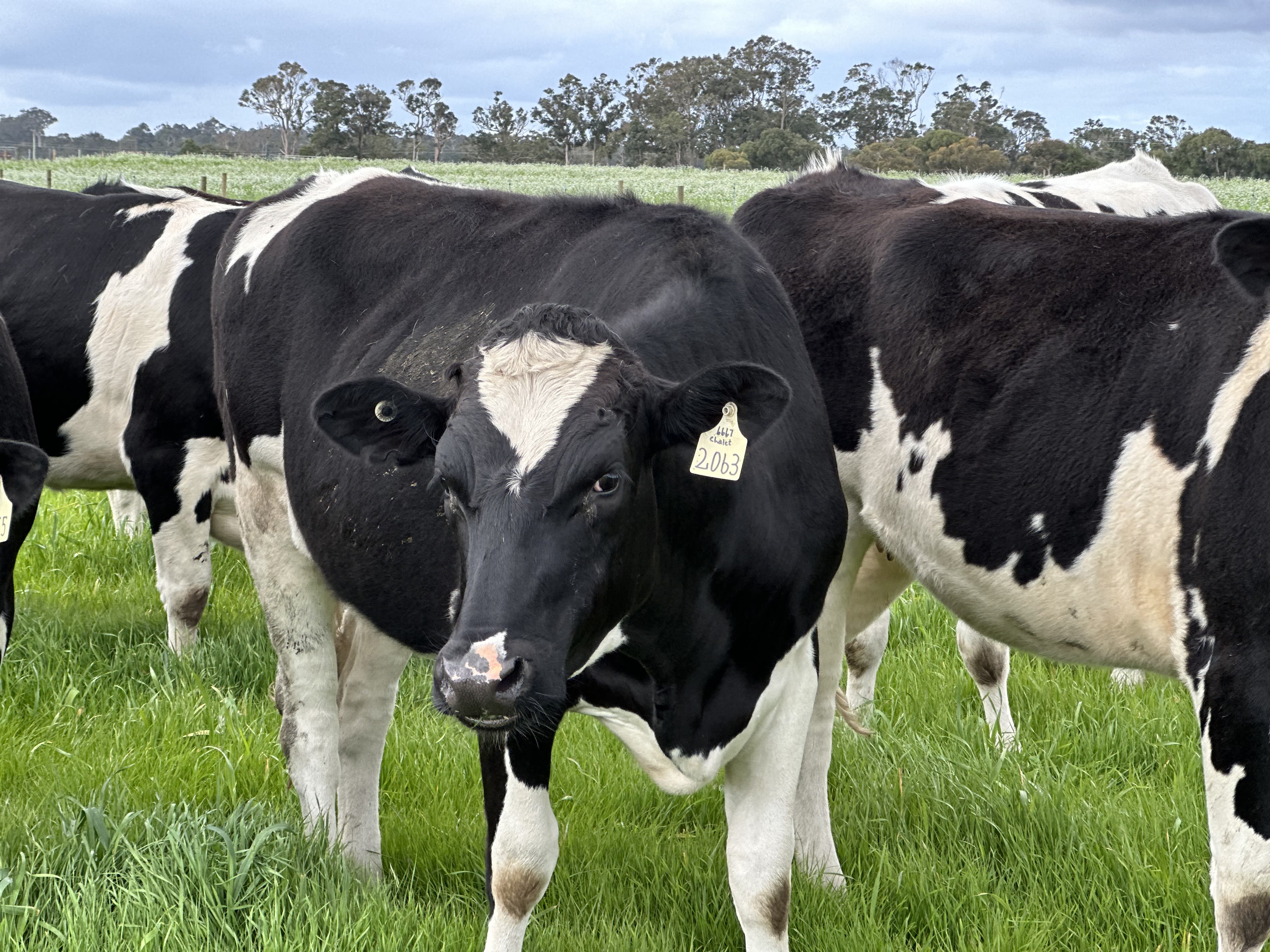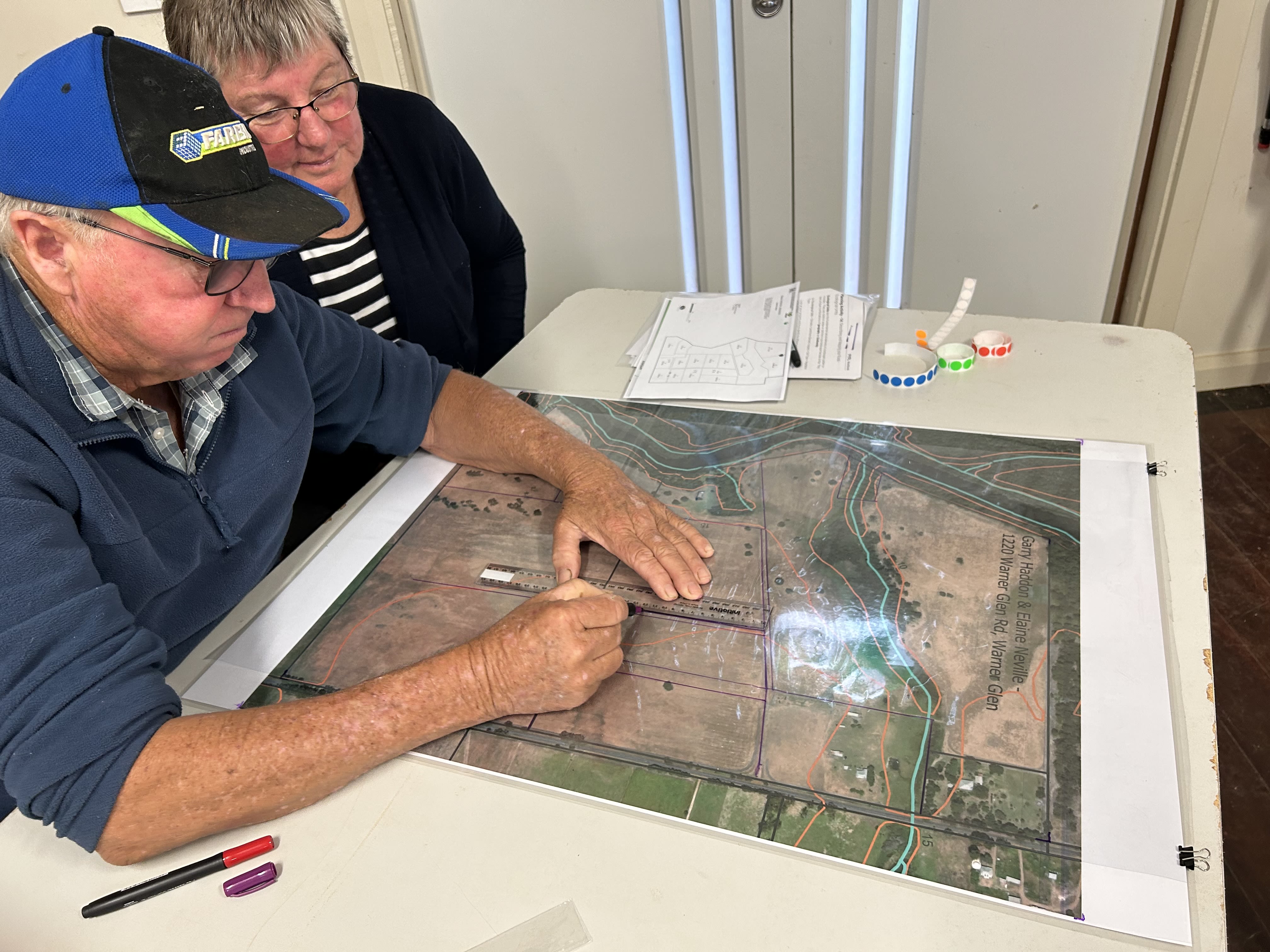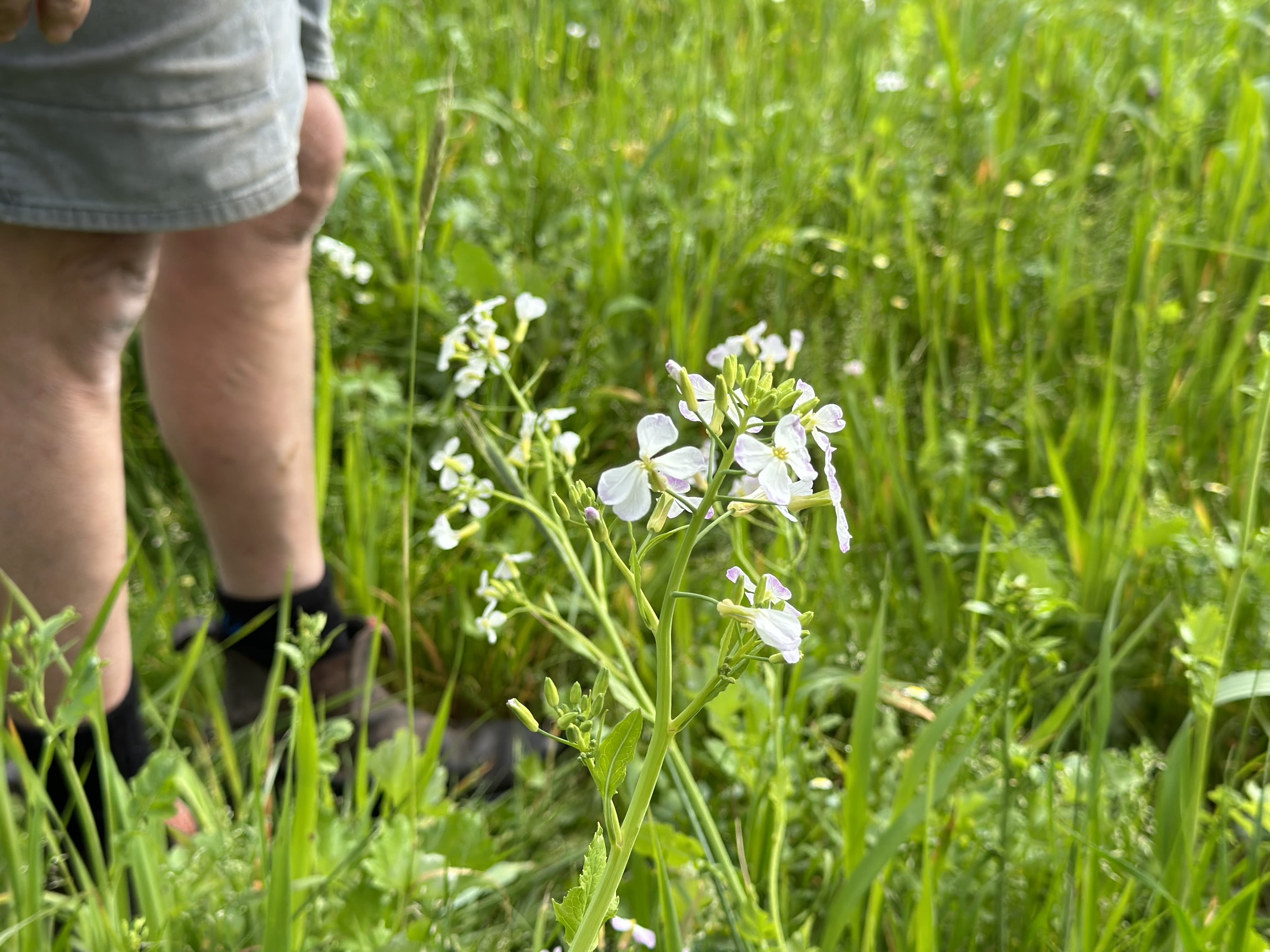Blackwood Springs | Case Study
Regenerative Agriculture in Practice Project 2023
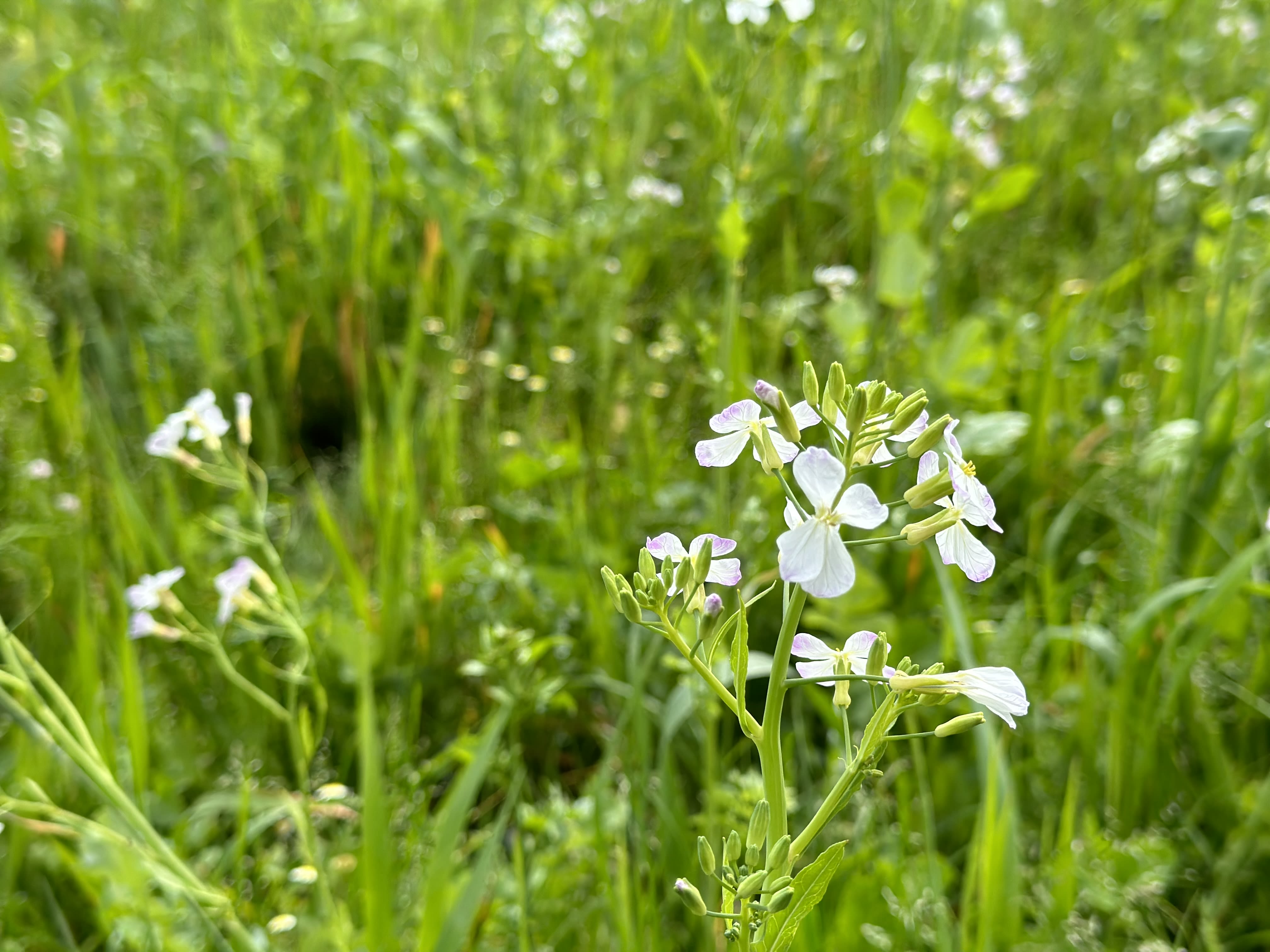
Blackwood Springs | Fact File
Location: Warner Glen, Warner Glen is a rural locality of the Shire of Augusta–Margaret River in the South West region of Western Australia. The northern and western borders of the locality are formed by the Blackwood River.The majority of the Shire of Augusta–Margaret River and the locality of Warner Glen are located on the traditional land of the Wadandi people, while the eastern part of the locality is the land of the Bibulman (also spelled Pibelmen) people, both of the Noongar nation
Land Owners: Neville and Elaine Haddon
Farm Size: 266 acres
Livestock: Approx. 120 heifers and 300 sheep plus lambs
Topography: Undulating to flat farm land, dropping towards the river. An unnamed creed runs through the farm and several natural springs are on the land.
Soil Type: Loamy sand over clay.
Water: The farm has multiple natural springs across the property forming some creeklines. The property backs onto the Blackwood River.
Blackwood Springs | Background
Neville and Elaine took over Blackwood Springs about 6 years ago. It was an old dairy farm but was was run-down and the fences had collapsed. Following the Karridale fires, the owners were given seed from the Wheatbelt which they had spread liberally across the farm. Unfortunately the seed included Doublegee and the farm was infested by the time the Haddons took over. Despite annual spraying the weeds have persisted - leading to another reason for Neville to investigate the value of cover cropping.
Doublegees from the farm
Doublegees from the farm
Other Farms | Busselton
The Haddons also run a large dairy farm in Busselton, and milk 1300 cows with their son Garry. They supply Harvey Fresh with over 12 million litres of milk every year.
With such a large herd and increasing feed costs, the Haddons are always seeking ways to grow high quality pasture at a lower cost. Blackwood Springs is significantly smaller than their Busselton farm, and is an experimental farm to see how they can grow and improve forage quality and diversity, and see if those principles can be introduced to the Busselton dairy.
The Busselton Farm is managed using regenerative agriculture principles, focusing on soil health and reduced synthetic fertilisers. The property is also the business centre, with offices on the farm. Creeklines are protected, native flora has been planted where possible, and biodiversity is encouraged throughout the farm.
Blackwood Springs Farm
Blackwood Springs Farm
Farming Background
Neville always knew he wanted to be a farmer. Despite farming not being a family business, his heart was set on working on the land, and after a short tenure in the timber industry - and at the tender age of 16 - he and his brother Terry bought their first farm (with help from his uncle as guarantor). The brothers farmed together for 8 or 9 years, but when he married Elaine and Terry married Jen, the brothers went their separate ways and Neville bought a couple of farms (around 460 acres) closer to Elaine's family in Busselton, where his father-in-law could help with sharing machinery to ease the workload.
Neville admits that this was a tough time. He was struggling with a huge debt, shearing at multiple farms as well as his own, managing his cattle and fitting as many other jobs as possible to make ends meet.
At the time he was hand milking two cows each morning before setting out on the rest of his workload. This was time-consuming and exhausting. "Bugger this," he thought, realising that milking two by hand took the same time as milking 100 with a machine.
So in 1984 Neville and Elaine secured the last of the 24 dairy farm quotas for the region, and turned their hand to dairy farming.
Since then, the Busselton farm has expanded from its original 460 acres to almost 4000 acres now, as neighbours have retired, often asking Neville and Elaine to take over their properties so they can trust that their precious farms will be nurtured from soil up.
Blackwood Springs has abundant wildlife and is a biodiversity hotspot. Backing onto the Blackwood River the property hosts long-necked turtles, eagles and many blue wrens and ducks. Neville and Elaine work hard to protect the property's biodiversity by fencing creeklines, keeping cattle away from sensitive trees (they have a habit of ring-barking Jarrahs) and protecting native bushland.
They are also controlling invasive weeds such as blackberry as much as possible.
The farm backs onto the Blackwood River and has multiple spring fed creeks.
The farm backs onto the Blackwood River and has multiple spring fed creeks.
Regenerative Agriculture
Neville and Elaine Haddon have been participants in the 2023 Regenerative Agriculture in Practice Program (RAPP23) with the Lower Blackwood LCDC. They have proactively engaged in workshops, field days and events to share their own knowledge and learn from the experts about the principles of regenerative agriculture and how to put them into practice on their own farms.
The couple have believed in regenerative agriculture principles since the very start of their farming journey. They have always recognised the importance of soil health and focused on the health of the entire farming system - reducing the use of synthetic fertilisers and using their livestock to condition the soils.
"If you haven't got healthy soils, you're not going to get the productivity you need to maintain a sustainable business" - Neville Haddon.
Due to their history of regenerative agriculture, their focus for the project was to find out more about how to further improve their soils, and specifically, how multi-species pastures could help them to extend their grazing season and boost their goal to be carbon neutral.

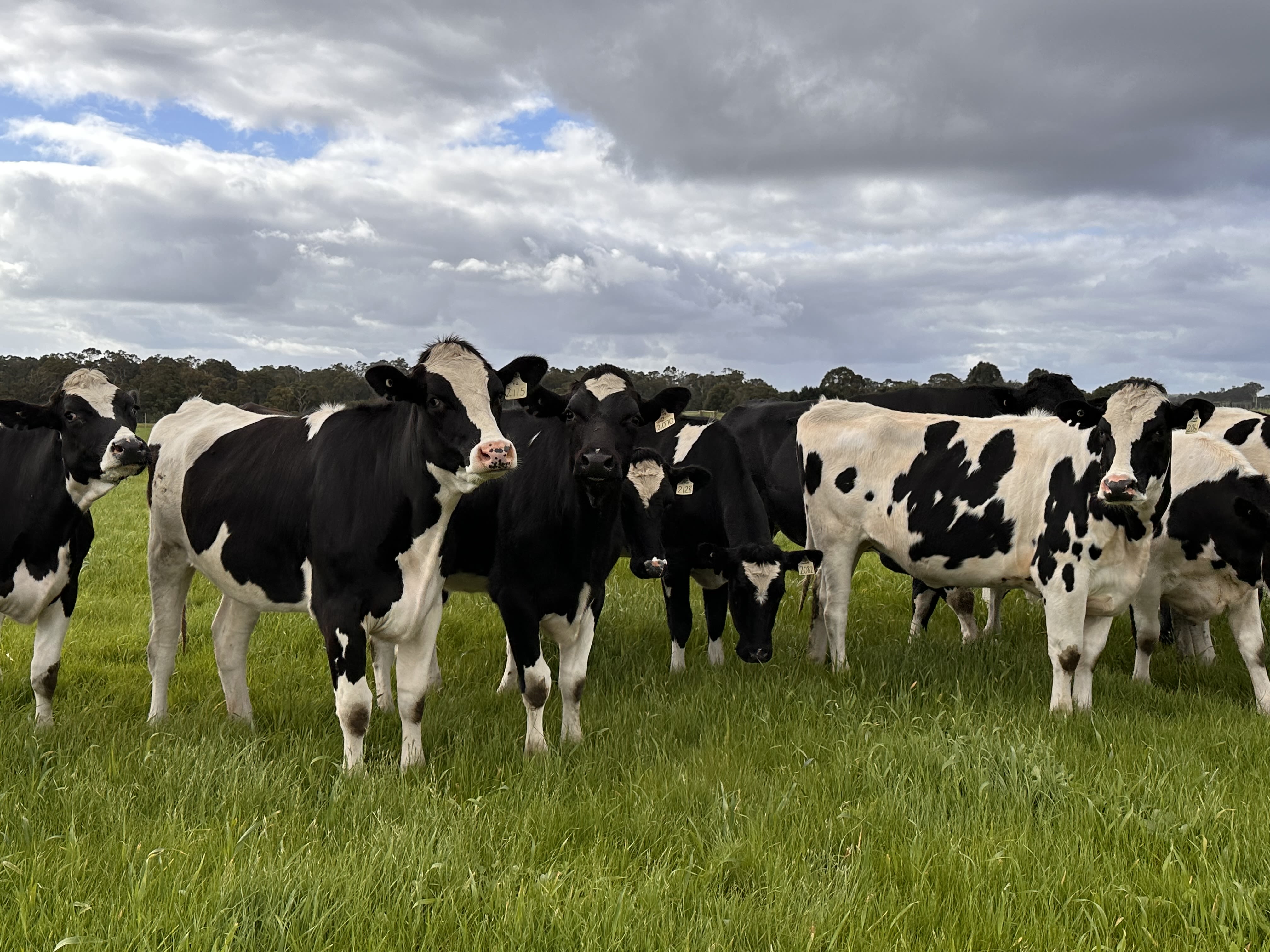

Multi-Species Pastures
The Haddons are dedicated to improving their soil health, and are keen to explore how to extend their pasture growing season to provide nutritious feed for their dairy herd beyond the current seasons. Summers are hot and dry, so any way to retain soil moisture and provide pasture for longer than the seasons have allowed so far would be a benefit to both their business and livestock wellbeing.
To explore ways to extend this growing season, Blackwood Springs farm was divided into paddocks of approximately 5 ha each, and planted with a multi-species mix.
In some paddocks the seed was planted with a seeder, direct through old grass. In others, it was disced and power harrowed.
Mix: buckwheat, flax, oats, vetch, peas, sunflowers, cereal rye, chicory, plantain, brassica, tritacali, serradella, tillage radish, Persian clover, crimson clover.
Neville Haddon on his Multi-species Cropping Project
The first grazing was 2 months after planting in May 2023. The mix was planted two weeks prior to the first rain, so the earth was very dusty and some seed was planted too deep due to the soft dust.
Some organic product was used in the planting, but since then there has been the addition of potash as the brassica leaves were showing purple.
Discolouration in the brassicas
Discolouration in the brassicas
Due to the high price of other fertilisers, Neville had to use some Urea to boost the crop.
Overall, the crop seems to have taken well, with some tillage radish as deep as 50-70cm. Some of the meadow is patchy, which could be down to the different soil patches, or areas where seed was too deep in the dust.
Some areas of meadow are more dense than others.
Some areas of meadow are more dense than others.
Ultimately, the goal of the multi-species pastures is to make the soil more productive due to greater amount of microbes. Ideally, it will also improve nutrition and the health of the cows, encouraging improved milk production.
"The soil is our best platform and we need high productive soils to produce the pasture we need. Perhaps this is an opportunity to look at soil in a different way. We want to make sure we leave our pasture in a more productive state than when we started" - Neville Haddon
Weed Suppression
Neville also sees the value of multi-species in his battle against the weeds, and hopes that the practice could even offer enough pressure to challenge the Doublegee...
The diverse plant communities within the multi-species mix can be more resilient to weed infestations because the competition between plant species can limit the ability of weeds to dominate the area. By integrating a rotational grazing pattern, the cows can also graze selectively, leading to the suppression of less palatable or weed-like plants while allowing desirable forage to thrive.
Carbon Neutral
Multi-species pastures improve carbon content in soil by promoting diverse plant communities, enhancing root biomass, supporting soil microbial activity, fixing nitrogen, reducing soil disturbance, and maintaining ground cover. These practices contribute to the accumulation of stable soil organic carbon.
As well as his focus on multi-species, Neville has boosted the amount of carbon in his soil with the added manure that is being spread on the paddocks. He's keen to get a measure of his soil carbon so he can assess his journey towards carbon neutrality.
"That's part of this multi-species project - to increase the depth of the carbon in our soil. Then if we have a measure of that we can say that we're farming carbon neutral, or even better, putting in more carbon than we currently have."
Neville recognises that becoming carbon neutral is a complex and long term challenge. He aims to get a clearer picture of his current carbon footprint - how much diesel is being used, electricity usage, water consumption - all the different factors that are part of the equation, so he can start to reach his goal.
Emerita Professor Lynette Abbott explains some of the complexities of measuring carbon:
Putting RAPP23 Into Practice
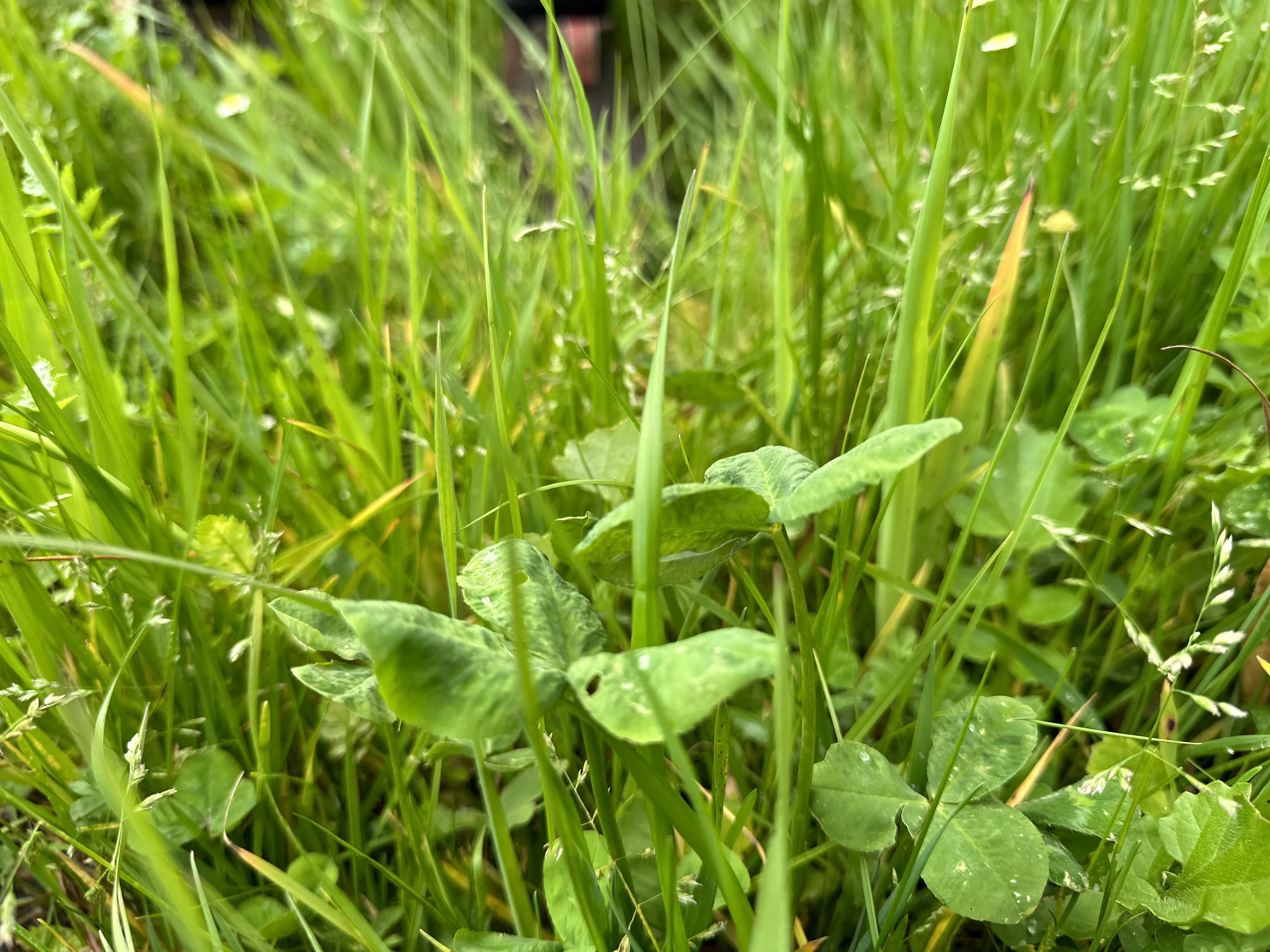
Putting RAPP23 into Practice...
Although their focus was on Multi-Species Cropping, the RAPP23 project has also boosted the couple's confidence in exploring and expanding their current regenerative agriculture practices.
Effluent Management
On their Busselton Dairy the Haddons have always been determined to make sure they don't allow run-off into Geographe Bay and are constantly in touch with the catchment council, DWER and Healthy Estuaries WA to do their part to keep the waterways clean. Effluent ponds reduce run-off, and manure and urine is mixed with barley straw, mulched and spread back onto the land, boosting microbes, carbon and nutrients and growing stronger wheat where previously the plants had been weak and spindly.
Fertiliser Management
Although some fertiliser input is still required on other parts of the farm the Haddons haven't added Phosphorus or Potassium to their Busselton dairy platform or areas close to the dairy for almost 15 years. Regular testing shows that their soils still retain significant P levels on the platform, that and Potash could be dropped from their fertiliser schedule in this area.
Grazing Management
"Ever since I've started milking - for over 40 years - we've always strip grazed" - Neville Haddon
Intuitively, Neville and Elaine have always followed regen ag principles - even years before the term was coined. Neville agrees with Judi Earl's grazing ideology - high density grazing with short rotations give pastures the opportunity to flourish. However, Neville's rotations are probably longer than Judi's recommendations. At Blackwood Springs he has two herds of 60 heifers which graze on a 5 hectare paddock for one week.
Multi-species expert Grant Sims explains the value of a rotational grazing system:
Whole Farm Planning
The RAPP23 Whole Farm Planning course was an ideal starting point as the Haddons started to establish Blackwood Springs as their multi-species experiment site. Having the opportunity to consider the best way to size paddocks, identify water points, consider grazing systems and stock movements was a vital module for the course - even for such experienced farmers.
Multi-species Pastures
This is the crux of the next regenerative farming journey for the Haddons. Leveraging Blackwood River Springs as an experimental trial site and following some of the principles and strategies from Dr. Christine Jones, Grant Sims and Prof. Lynette Abbott will give the couple a sound basis to start developing a productive multi-species program of their own.
For more resources on establishing multi-species and perennial pastures, head to the Lower Blackwood LCDC's Online Guide to Pasture Biodiversity.
Advice
Neville accepts that farming is a tough business, and any practices must be based around productivity.
He is a strong believer in regenerative agriculture practices and is committed to leaving the land in a stronger and more productive state than when he came to it.
But he admits that he is fortunate in having the opportunity to use Blackwood Springs as an experimental site to help with decision making on his large dairy farm.
His main advice to newcomers to the regenerative agriculture principles is to consider using trial sites as they start to come to grips with different farming practices and principles, and sometimes accept that it's not possible to do it all at once.
This case study was produced by 'Talkin' After Hours', the Lower Blackwood Landcare's Online Community & Information Hub
The case study forms part of a collaborative roadshow that took place across seven catchments in the south west of WA in July and August 2023 to encourage farmers and landholders to build their knowledge and skills around multi-species pastures and cropping.
The roadshow was coordinated by the Lower Blackwood LCDC in collaboration with six other catchment groups across the southwest, and is funded through Soil Wise. Soil Wise is funded by the National Landcare Program Smart Farms Small Grants – an Australian Government initiative. It is supported by Healthy Estuaries WA – a State Government program.
This case study also forms part of the Lower Blackwood LCDC's Regenerative Agriculture in Practice Program (RAPP) 2023.
RAPP2023 is delivered in partnership with the Lower South West Growers Group and is supported through the Augusta Margaret River Shire Environmental Management Fund.





